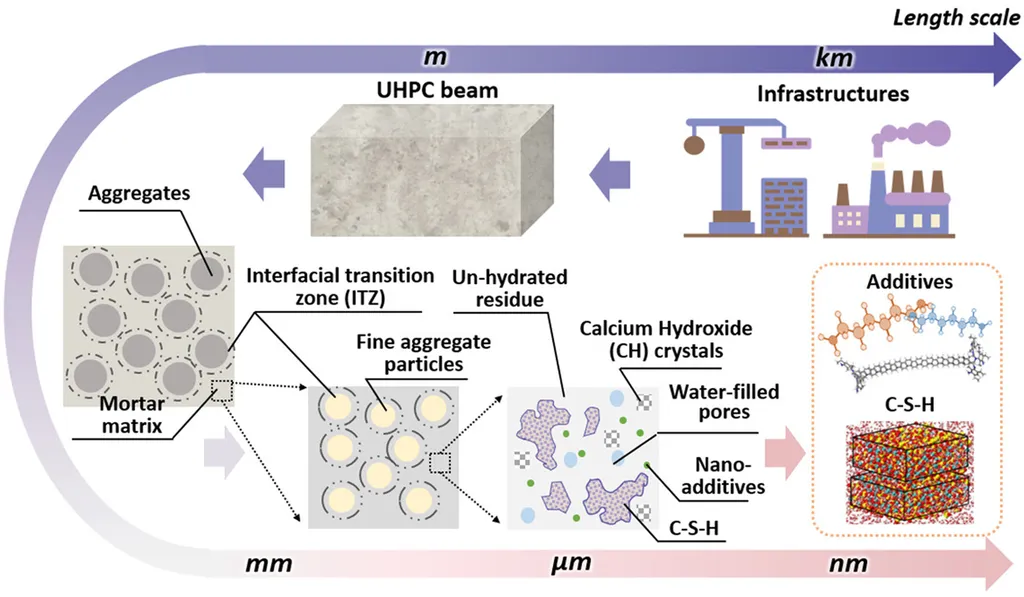In the quest for sustainable construction materials, researchers have turned their attention to ultra-high performance concrete (UHPC), a material that promises to revolutionize the energy sector and beyond. A recent study published in the journal *npj Materials Sustainability* (which translates to *Nature Partner Journal Materials Sustainability*) delves into the multiscale perspectives that could advance the sustainability of fiber-reinforced UHPC, offering insights that could reshape the future of construction.
At the heart of this research is Xing Quan Wang, a professor at the Department of Architecture and Civil Engineering at City University of Hong Kong. Wang and his team have been exploring how UHPC, with its remarkable durability and mechanical properties, can be optimized for sustainability. “UHPC is not just a material; it’s a system that integrates nano-additives, fibers, and cementitious materials,” Wang explains. “Understanding its multiscale characteristics is key to unlocking its full potential.”
The study highlights the distinctive multi-scale structural characteristics of UHPC, which set it apart from conventional concrete. With lower embodied energy and diminished carbon emissions, UHPC aligns with the principles of sustainable development. The researchers emphasize the importance of a multiscale perspective in designing, applying, and innovating UHPC. “By incorporating multiscale mechanics research, including analytical and modeling methods, we can significantly enhance the sustainability of UHPC,” Wang notes.
One of the most compelling aspects of this research is its potential impact on the energy sector. UHPC’s durability and strength make it an ideal material for constructing energy-efficient buildings and infrastructure. The study discusses how advances in multiscale mechanics can lead to more efficient production and construction processes, ultimately reducing the environmental footprint of these projects.
The researchers also address the challenges and perspectives in the design, production, and construction of UHPC materials and structures. They envision a future where sustainable UHPC is applied globally, led by additive manufacturing and artificial intelligence. “The integration of these technologies could revolutionize the way we build, making it more sustainable and efficient,” Wang says.
This research not only sheds light on the current advancements in UHPC but also paves the way for future developments. As the construction industry continues to seek sustainable solutions, the insights from this study could play a crucial role in shaping the materials and technologies of tomorrow. The study’s publication in *npj Materials Sustainability* underscores its significance and relevance to the broader scientific community.
In a world increasingly focused on sustainability, the research led by Xing Quan Wang offers a glimpse into the future of construction materials. By embracing a multiscale perspective, the industry can move closer to achieving its sustainability goals, one innovative material at a time.

